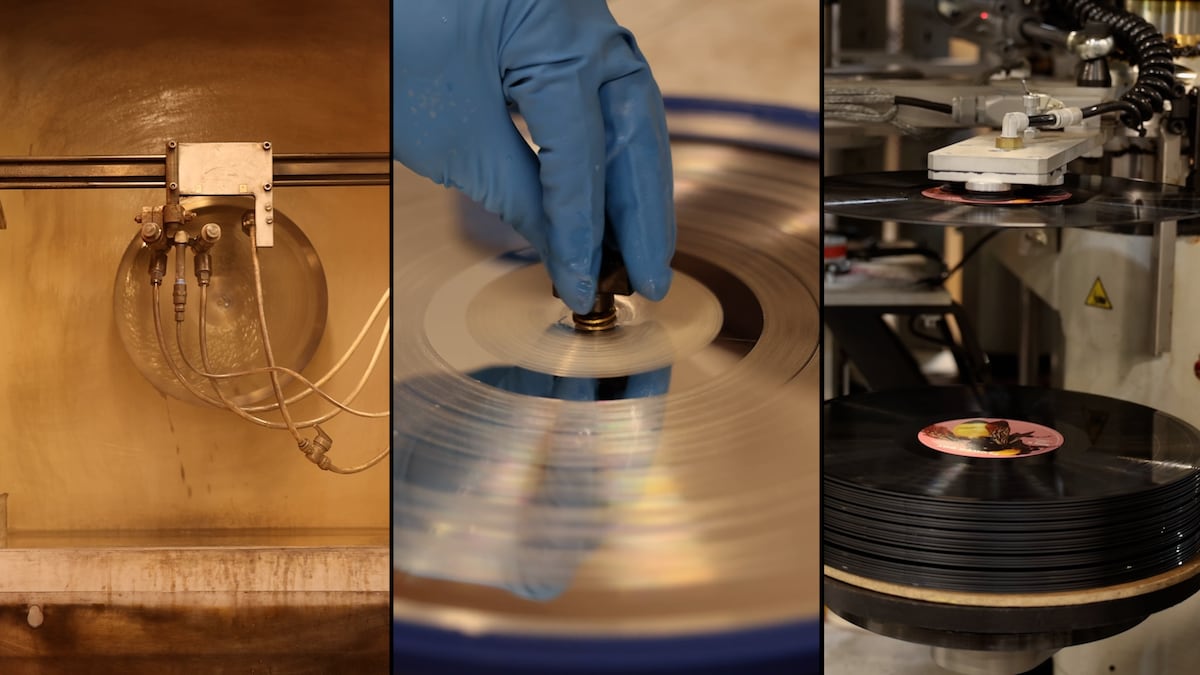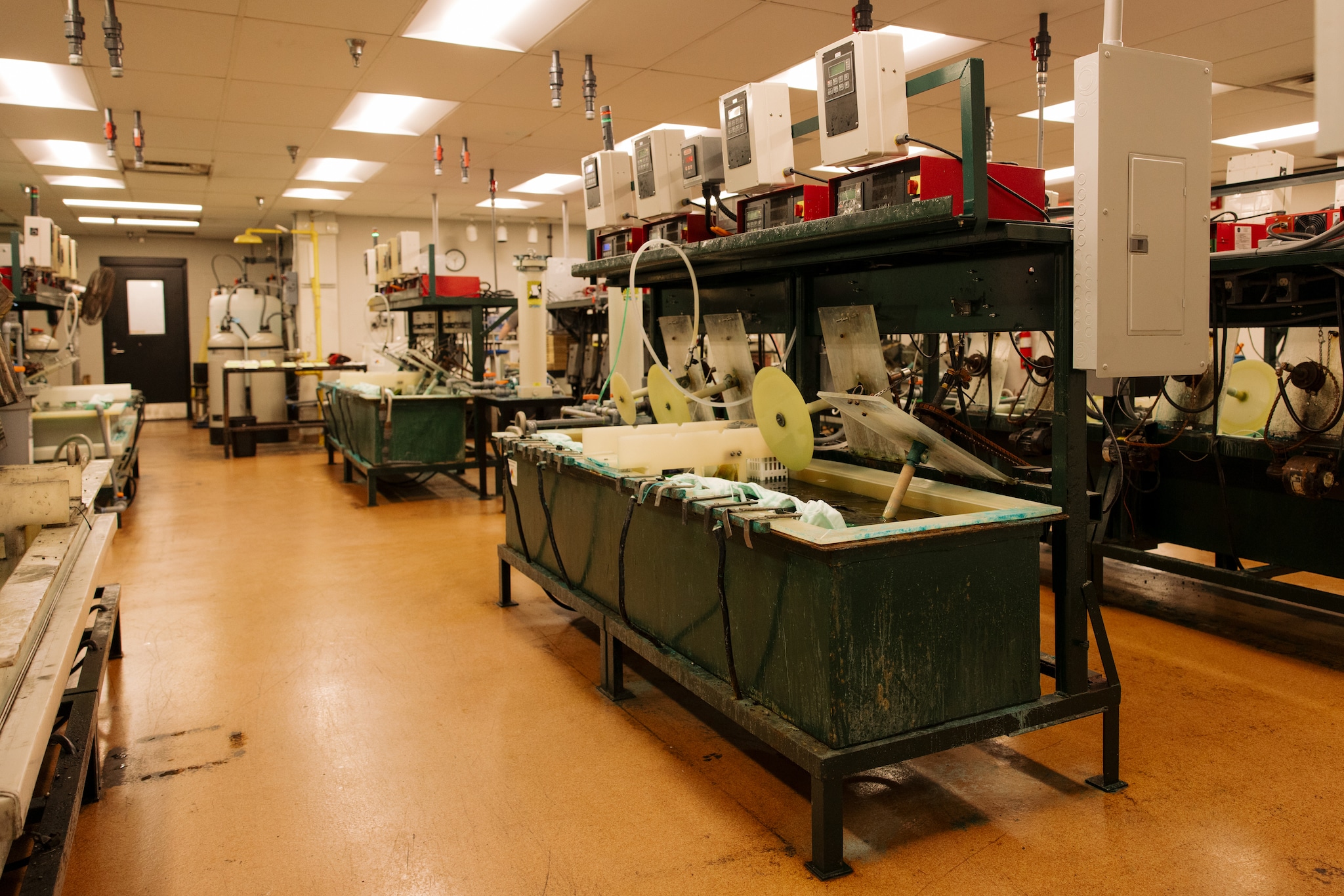How vinyl records, like Taylor Swift’s, are made
GoogleAds

A 12-inch vinyl record can hold about 44 minutes of music. But manufacturing one can take multiple days — a complex but delicate process involving sapphires, rubies and silver.
Music fans may love the immediacy of streaming music, but that hasn’t stopped them from bringing vinyl records mainstream. Revenue from vinyl jumped 10 percent to $1.4 billion in 2023, and outsold CDs for the second time since 1987, according to the Recording Industry Association of America.
Artists like Taylor Swift, Beyoncé and Kacey Musgraves are leaning in, releasing vinyl albums with new colors, cover art and, sometimes, exclusive tracks.
Story continues below advertisement
Story continues below advertisement
Last week, The Washington Post visited Nashville’s United Record Pressing, which made the first Beatles single in the United States in 1963, to witness the 2024 vinyl-making process and watch a Tyler, the Creator record get pressed.
Follow along and find out how records are made — from lacquer to label.
Making the ‘DNA’
First, the artist records their album. Then a relay race begins. A sound engineer masters the digital files, sending a high-quality version of the tracks to the cutting engineer.
A lacquer, a soft material similar to nail polish, is attached to an aluminum plate.
At United Record Pressing’s facility, a stylus with a sapphire or ruby point vibrates with the sound of the music, and cuts the sound waves onto the lacquer, creating the grooves that allow you to hear music.
“The cut is almost like DNA,” said Matt Lindsey, United Record Pressing’s chief technology officer. “It’s specific and unique to that music content only.”
A plating technician then drills the lacquer to create a hole in the middle, and scores the edges so an electrical current can carry through the material.


Silver ‘spray paint’
“It’s like a spray paint booth,” Lindsey said. The tool used for silvering is basically the same thing as a spray paint head, he said.

The disc is mounted to be put into a nickel plating bath where it will be copied.
This disc is still not a record we buy — but it’s getting closer.

Peeling off the copies
Next come large chemical baths with electricity running through them, where the silvered lacquer disc is submerged.
“Its like a cooking a really slow temperature meat,” said Dustin Blocker, chief creative officer of vinyl manufacturing company Hand Drawn Records, in Dallas. Dissolved pellets of nickel in the bath are attracted to the silvered disc and conform to the shape and grooves of the lacquer.
About 12 hours later, the nickel creates a mirror image copy of the lacquer disc. “The longer you can roast it, the better that copy is going to be,” said Blocker, who is also president of the Vinyl Records Manufacturing Association.

That mirror image copy is peeled from the lacquer disc — and copied again.
“We try to make that stamper as closely resembling the grooves of that lacquer as possible,” Lindsey said.
But first, the stampers must be prepared so they will fit in the pressing machine.
Their centers are punched out, and edges are formed using a machine.


Story continues below advertisement
Story continues below advertisement
A ‘giant waffle maker’ for records
The actual material you feel on a vinyl record is PVC, or polyvinyl chloride, which often comes in the form of small pellets.
The PVC is fed into a part of the record pressing machine where it is melted at 250 degrees into a hockey-puck-like shape.

The puck, with a consistency like taffy, gets sent to the hydraulic press. There, the machine squishes the two stampers — for the A side and B side of a record — applying heat with high pressure steam and forcing the puck to conform to their shape.
Think of it as a “giant waffle maker,” said Jenn D’Eugenio, president and founder of Austin-based Women in Vinyl. This part only takes about 20 to 30 seconds, she said.
A quick 10-second water cooling in the press forces the record to hold its shape.


The imprinted vinyl record is next trimmed, cooled and packaged for music lovers.
United Record Pressing has different machines to make various sizes of records, including a 7-inch machine, shown pressing an Elvis record, and a 12-inch machine, shown pressing a 2017 Tyler, the Creator record, “Flower Boy.” Colored PVC is used to make records in vibrant colors, a trend that has gotten more popular as artists experiment with different versions of their albums.

The cost of making one record varies in the industry depending on the size of the manufacturer and the packaging, but could be between $6 and $9, Blocker said.
Seventeen years ago, Michaels thought he was buying a business that would stay fairly niche.
“I didn’t think it would die, but I didn’t think it would go crazy with growth,” he said. “Its gone from kind of a forgotten industry to something that drew more intention, more investment and has become increasingly sophisticated.”
 About this story
About this story
Design and development by Courtney Beesch and Tyler Remmel. Photo editing by Haley Hamblin. Video editing by Allie Caren and Nicki DeMarco. Design editing by Betty Chavarria. Editing by Karly Domb Sadof. Copy editing by Gaby Morera Di Núbila.
Source : https://www.washingtonpost.com/business/interactive/2024/how-vinyl-records-made-taylor-swift/
Author :
Date : 2024-04-20 12:06:49
GoogleAds




